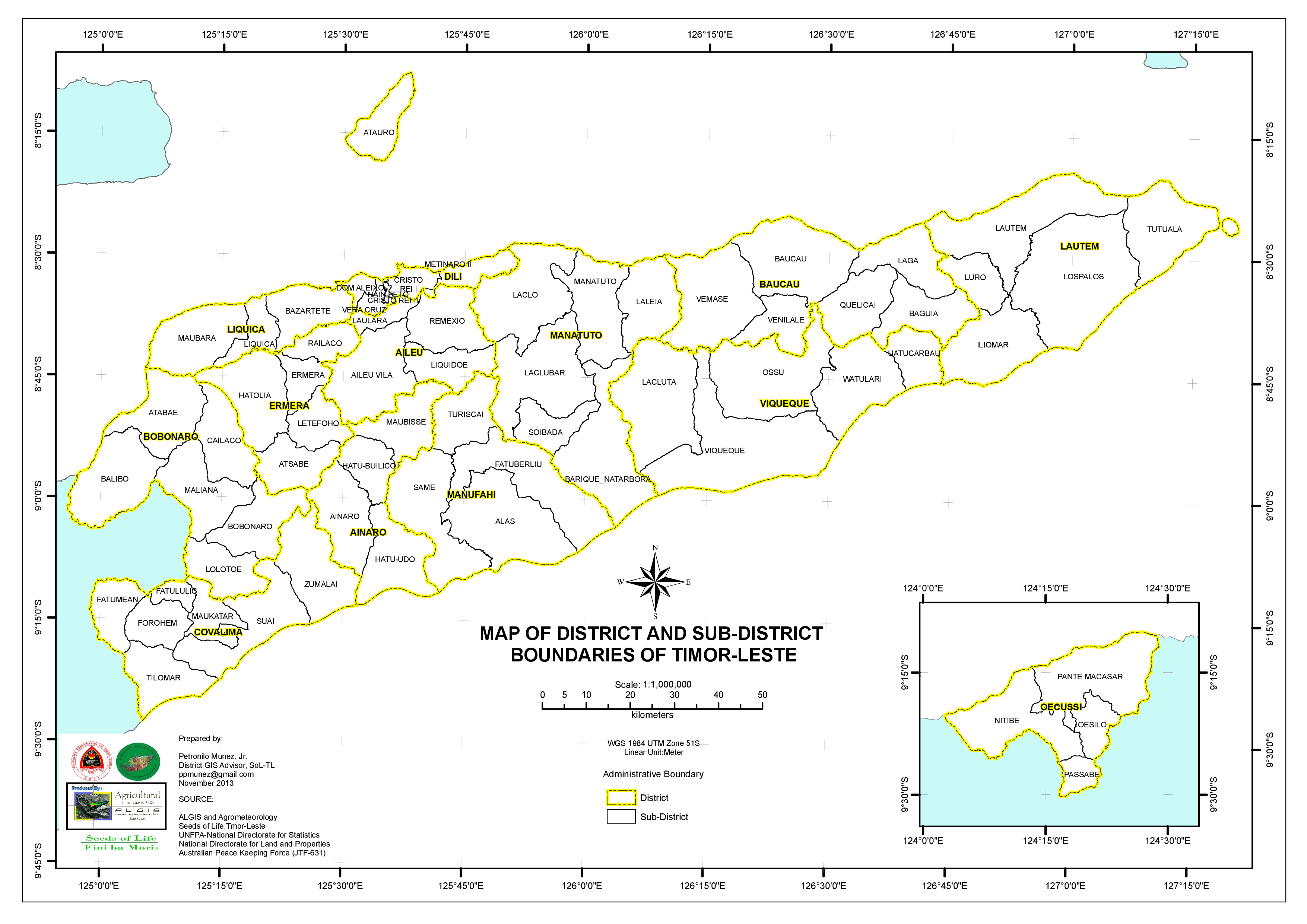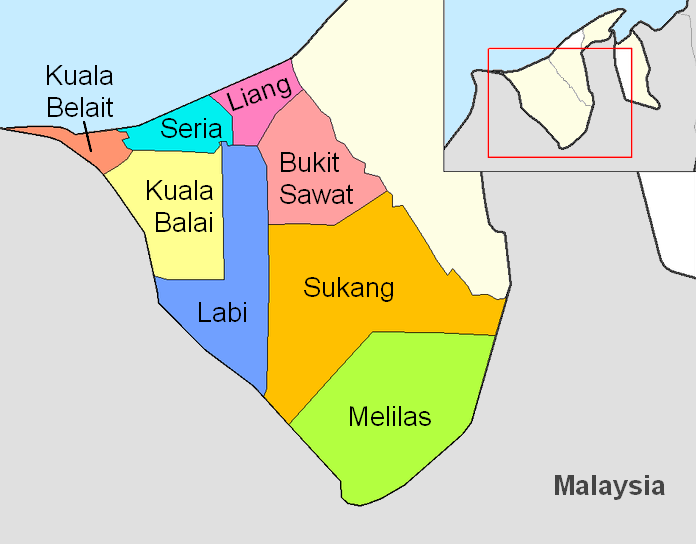|
Subdistrict
A subdistrict or sub-district is an administrative division that is generally smaller than a district. Equivalents * Administrative posts of East Timor, formerly Portuguese-language * Kelurahan, in Indonesia * Mukim, a township in Brunei, Indonesia, Malaysia, and Singapore * Nahiyah, in Palestine * Tambon, a township in Thailand * Tehsil (also known as tahsil, taluka, taluk, circle, mandal or subdivision), a township in South Asia * Upazila, in Bangladesh Translations * Subdistricts of China A subdistrict ()' is one of the smaller administrative divisions of China China, officially the People's Republic of China (PRC), is a country in East Asia. It is the world's List of countries and dependencies by population, most pop ... (), in Mainland China, literally streets and avenues References {{Set index article Types of administrative division ... [...More Info...] [...Related Items...] OR: [Wikipedia] [Google] [Baidu] |
Administrative Posts Of East Timor
The municipalities of East Timor East Timor (), also known as Timor-Leste (), officially the Democratic Republic of Timor-Leste, is an island country in Southeast Asia. It comprises the eastern half of the island of Timor, the exclave of Oecusse on the island's north-w ... are divided into 65 administrative posts (former ''subdistricts''). Each administrative post is divided into several ''sucos''. Sucos is divided into several ''aldeias'', the smallest political division of East Timor. List See also * Municipalities of East Timor * Sucos of East Timor References {{Articles on second-level administrative divisions of Asian countries East Timor, Administrative posts East Timor 2 Administrative posts, East Timor East Timor geography-related lists de:Liste der Verwaltungseinheiten Osttimors ... [...More Info...] [...Related Items...] OR: [Wikipedia] [Google] [Baidu] |
Tambon
''Tambon'' ( th, ตำบล, ) is a local governmental unit in Thailand. Below district ('' amphoe'') and province ('' changwat''), they form the third administrative subdivision level. there were 7,255 tambons, not including the 180 '' khwaeng'' of Bangkok, which are set at the same administrative level, thus every district contains eight to ten tambon. ''Tambon'' is usually translated as "township" or "subdistrict" in English — the latter is the recommended translation, though also often used for '' king amphoe'', the designation for a subdistrict acting as a branch (Thai: ''king'') of the parent district. Tambon are further subdivided into 69,307 villages ('' muban''), about ten per ''tambon''. ''Tambon'' within cities or towns are not subdivided into villages, but may have less formal communities called ''chumchon'' ( ชุมชน) that may be formed into community associations. History The ''tambon'' as a subdivision has a long history. It was the second-level ... [...More Info...] [...Related Items...] OR: [Wikipedia] [Google] [Baidu] |
Subdistricts Of China
A subdistrict ()' is one of the smaller administrative divisions of China China, officially the People's Republic of China (PRC), is a country in East Asia. It is the world's List of countries and dependencies by population, most populous country, with a Population of China, population exceeding 1.4 billion, slig .... It is a form of township-level division which is typically part of a larger urban area, as opposed to a discrete town (zhèn, 镇) surrounded by rural areas, or a rural township (xiāng, 乡). In general, urban areas are divided into subdistricts and a subdistrict is sub-divided into several residential communities or neighbourhoods as well as into villagers' groups (居民区/居住区, 小区/社区, 村民小组). The subdistrict's administrative agency is the subdistrict office ()"【街道办事处】 jiēdào bànshìchù 市辖区、不设区的市的人民政府派出机关。在上一级政府领导下,负责本辖区内的社区服务� ... [...More Info...] [...Related Items...] OR: [Wikipedia] [Google] [Baidu] |
Nahiyah
A nāḥiyah ( ar, , plural ''nawāḥī'' ), also nahiya or nahia, is a regional or local type of administrative division that usually consists of a number of villages or sometimes smaller towns. In Tajikistan, it is a second-level division while in Syria, Iraq, Lebanon, Jordan, Xinjiang, and the former Ottoman Empire, where it was also called a '' bucak'', it is a third-level or lower division. It can constitute a division of a '' qadaa'', '' mintaqah'' or other such district-type of division and is sometimes translated as " subdistrict". Ottoman Empire The nahiye ( ota, ناحیه) was an administrative territorial entity of the Ottoman Empire, smaller than a . The head was a (governor) who was appointed by the Pasha. The was a subdivision of a Selçuk Akşin Somel. "Kazâ". ''The A to Z of the Ottoman Empire''. Volume 152 of A to Z Guides. Rowman & Littlefield, 2010. p. 151. and corresponded roughly to a city with its surrounding villages. s, in turn, were divided int ... [...More Info...] [...Related Items...] OR: [Wikipedia] [Google] [Baidu] |
Administrative Division
Administrative division, administrative unit,Article 3(1). country subdivision, administrative region, subnational entity, constituent state, as well as many similar terms, are generic names for geographical areas into which a particular, independent sovereign state (country) is divided. Such a unit usually has an administrative authority with the power to take administrative or policy decisions for its area. Usually, the countries have several levels of administrative divisions. The common names for the principal (largest) administrative divisions are: states (i.e. "subnational states", rather than sovereign states), provinces, lands, oblasts, governorates, cantons, prefectures, counties, regions, departments, and emirates. These, in turn, are often subdivided into smaller administrative units known by names such as circuits, counties, ''comarcas'', raions, '' județe'', or districts, which are further subdivided into the municipalities, communes or communities ... [...More Info...] [...Related Items...] OR: [Wikipedia] [Google] [Baidu] |
District
A district is a type of administrative division that, in some countries, is managed by the local government. Across the world, areas known as "districts" vary greatly in size, spanning regions or county, counties, several municipality, municipalities, subdivisions of municipalities, school district, or political district. By country/region Afghanistan In Afghanistan, a district (Persian language, Persian ps, ولسوالۍ ) is a subdivision of a province. There are almost 400 districts in the country. Australia Electoral districts are used in state elections. Districts were also used in several states as cadastral units for land titles. Some were used as squatting districts. Cadastral divisions of New South Wales, New South Wales had several different types of districts used in the 21st century. Austria In Austria, the word is used with different meanings in three different contexts: * Some of the tasks of the administrative branch of the national and regional governme ... [...More Info...] [...Related Items...] OR: [Wikipedia] [Google] [Baidu] |
Kelurahan
In Indonesia, village or subdistrict is the fourth-level subdivision below a district, regency/city, and province. There are a number of names and types for villages in Indonesia, with ''desa'' (rural village) being the most frequently used for regencies and ''kelurahan'' (urban village) for cities. According to the 2019 report by the Ministry of Home Affairs, there are 8,488 urban villages and 74,953 rural villages in Indonesia. Types of villages ''Kelurahan'' ''Kelurahan'' is an urban village terminology primarily used in cities, but also tiny parts of regencies. It is commonly translated to English as subdistrict. The leader of ''kelurahan'' is called ''lurah''. A ''lurah'' is a civil servant appointed by the district head. According to the Regulation of the Minister of Home Affairs Number 31 of 2006, a ''kelurahan'' can be created with the following criteria: *Java and Bali: having at least 4,500 residents or 900 families within an area of at least 3 km2. *Sumatra a ... [...More Info...] [...Related Items...] OR: [Wikipedia] [Google] [Baidu] |
Mukim
A mukim is a type of administrative division used in Brunei, Indonesia, Malaysia and Singapore. The word ''mukim'' is a loanword in English. However, it was also originally a loanword in Malay from the Arabic word: (meaning ''resident''). The closest English translation for mukim is township. Usage Brunei In Brunei, a mukim is the immediate subdivision of a district (). The equivalent English word for 'mukim' is 'township'. There are 38 mukims in Brunei. Each mukim is an administrative area made up of several ( Malay for "village"). A mukim is headed by a (Malay for "headman"), which is an elected office. The number of mukims in each of the districts in Brunei is as follows: The smallest mukim by area is Mukim Saba in the Brunei-Muara District. The largest mukim by area is Mukim Sukang in the Belait District. The last change in the mukim boundaries was in the late 1990s when Mukim Kumbang Pasang was merged into Mukim Kianggeh and Mukim Berakas was divided i ... [...More Info...] [...Related Items...] OR: [Wikipedia] [Google] [Baidu] |
Tehsil
A tehsil (, also known as tahsil, taluka, or taluk) is a local unit of administrative division in some countries of South Asia. It is a subdistrict of the area within a district including the designated populated place that serves as its administrative centre, with possible additional towns, and usually a number of villages. The terms in India have replaced earlier terms, such as '' pargana'' ('' pergunnah'') and ''thana''. In Andhra Pradesh and Telangana, a newer unit called mandal (circle) has come to replace the system of tehsils. It is generally smaller than a tehsil, and is meant for facilitating local self-government in the panchayat system. In West Bengal, Bihar, Jharkhand, community development blocks are the empowered grassroots administrative unit, replacing tehsils. As an entity of local government, the tehsil office ( panchayat samiti) exercises certain fiscal and administrative power over the villages and municipalities within its jurisdiction. It is the ultimate ... [...More Info...] [...Related Items...] OR: [Wikipedia] [Google] [Baidu] |
Subdivision (India)
A subdivision of India refers to an administrative division of an Indian state below the level of a district. A district may have multiple subdivisions, and each of those subdivisions may contain multiple subdistricts and municipalities ('taluk', 'tehsil', 'community development block', ' mandal', or 'circle A circle is a shape consisting of all points in a plane that are at a given distance from a given point, the centre. Equivalently, it is the curve traced out by a point that moves in a plane so that its distance from a given point is cons ...' depending on the state). Administration in a subdivision is carried out by Sub Divisional Magistrate (SDM), an entry level IAS officer or State Civil Service Member. In West Bengal, for example, Murshidabad district contains five subdivisions ('mahakumas'). Its ( Jangipur subdivision) contains seven community development blocks. Types of administrative division * {{geo-term-stub ... [...More Info...] [...Related Items...] OR: [Wikipedia] [Google] [Baidu] |
Upazila
An ''upazila'' ( bn, উপজেলা, upôzela, lit=sub-district pronounced: ), formerly called ''thana'', is an administrative region in Bangladesh, functioning as a sub-unit of a district. It can be seen as an analogous to a county or a borough of Western countries. Rural upazilas are further administratively divided into union council areas (union parishads). Bangladesh ha495 upazilas(as of 20 Oct 2022). The upazilas are the second lowest tier of regional administration in Bangladesh. The administrative structure consists of divisions (8), districts (64), upazilas (495) and union parishads (UPs). This system of devolution was introduced by the former military ruler and president of Bangladesh, Lieutenant General Hossain Mohammad Ershad, in an attempt to strengthen local government. Below UPs, villages (''gram'') and ''para'' exist, but these have no administrative power and elected members. The Local Government Ordinance of 1982 was amended a year later, redesignati ... [...More Info...] [...Related Items...] OR: [Wikipedia] [Google] [Baidu] |



